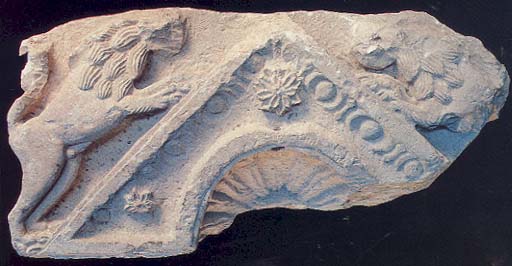Image Details

Zev Radovan
The ark pediment from the synagogue at Nabratein. In the third century A.D. this 1000-pound carved block of limestone rested on stone pillars; together the pediment and columns formed a shelter for a wooden Torah Shrine. The Torah Shrine protected handwritten Torah scrolls which rested on the shelves inside it. The ark served as the symbolic representation of the former Temple in Jerusalem and of the portable Ark of the Covenant carried by the Israelites in Sinai.
Found upside down in a later synagogue prayer platform, the pediment is decorated with a rosette below the peaked roof and with egg and dart carvings along the roof line. A scallop-shell carving occupies the center of the pediment into which an L-shaped hole was carved (seen immediately below the rosette). When the ark stood in the synagogue a chain would have hung from this hole holding a perpetually burning oil lamp (ner tamid). An eternal light was also part of the Biblical Temple and the desert Tabernacle (Exodus 27:20; Leviticus 24:1–4; 1 Samuel 3:3).
Although lions were a popular motif in ancient Jewish art, the rampant Nabratein lions are unique because of the vigorous and detailed modeling of their bodies.
